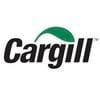Abnormal high progesterone levels during farrowing might influence IgG concentration in sow colostrum
Published: April 16, 2025
Source : S. Hasan 1,*, S. Junnikkala 2, O. Peltoniemi 1, C. Oliviero 1 / 1 Department of Production Animal Medicine; 2 Department of Veterinary Biosciences, University of Helsinki, Helsinki, Finland.
Summary
Keywords: Colostrum, Progesterone, Sow
Introduction:
Colostrum plays an essential role in piglet survival and growth, providing the piglets with a source for both immunoglobulin (mainly IgG) and energy. The neonatal piglets lack IgG, which makes them dependent on colostrum as the sole source of antibody. Colostrum IgG composition might be highly variable among sows, even though sows are of the same genotype, parity and are reared in a similar environment. Lactogenesis and colostrum production is induced hormonally by a dramatic drop of progesterone (P4) concentrations which leads to a pre-partum peak of prolactin (PRL). There are studies revealing that a severely impaired production of colostrum is related to a delay in the decrease of P4 concentrations during the pre-partum period. Therefore we assumed that there might be an impaired effect of a high level of P4 concentration on quality of colostrum (IgG concentration) during parturition. The aim of the present study was to investigate the potential relationship between abnormally high P4 levels at parturition and poor colostrum IgG content in sows.
Materials and Methods:
Blood samples (n=38) were collected from vena saphena medialis using ice chilled EDTA K3 tubes to assess P4 concentration. Samples were centrifuged at 1006 × g for 15 min and the plasma wasfrozen at -20° C until analysis. Two blood samples were collected from each sow, at the beginning and end of farrowing. Colostrum samples (N = 38) were obtained between 0-3 h after the birth of first piglet. Samples were frozen at -20° C until analysis.
Plasma samples for P4 were analyzed using a commercial radioimmunoassay (RIA) kit (Progesterone RIA kit, MP Biomedicals, CA, USA) and the laboratory analysis of total colostrum IgG was done using commercially available pig IgG ELISA kit (Pig IgG ELISA kit, Bethyl Laboratories, Montgomery, USA).
Results:
The average plasma P4 concentration were 3.37 ± 2.06 ng/ml (range 0.93 – 10.71 ng/ml) and 2.62 ± 1.65 ng/ml (range 0.44 – 8.92 ng/ml) (mean ± SD) at the beginning and the end of farrowing respectively. Average IgG concentration (0-3 h) was 74.01 ± 26.77 mg/ml (range 28.57 – 117.80 mg/ml).
Sows which had values of P4 > 4.00 ng/ml had a tendency to have lower IgG in colostrum (p = 0.10).
Conclusion:
We found that sows with an abnormal P4 concentration at farrowing tended to have lower IgG content in colostrum, which might indicate hormonal disruption during the farrowing, with potential negative effects on piglets IgG uptake.
Disclosure of Interest: None Declared.
Published in the proceedings of the International Pig Veterinary Society Congress – IPVS2016. For information on the event, past and future editions, check out https://www.theipvs.com/future-congresses/.
Content from the event:
Related topics:
Mentioned in this news release:
Recommend
Comment
Share

Would you like to discuss another topic? Create a new post to engage with experts in the community.










